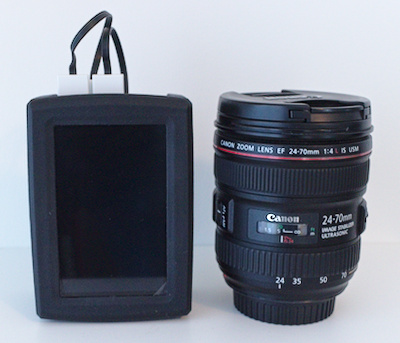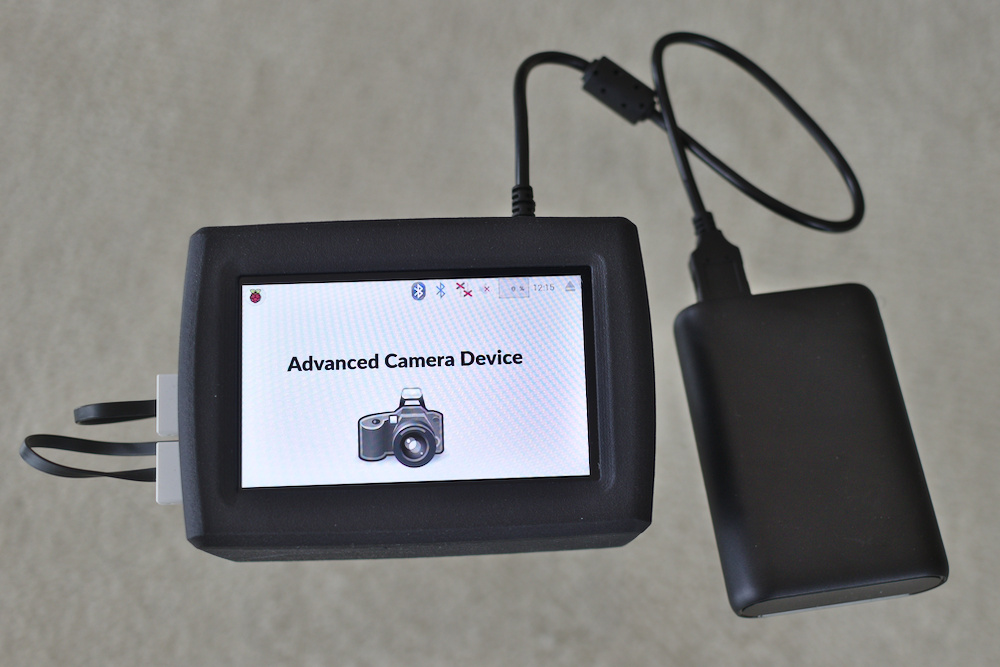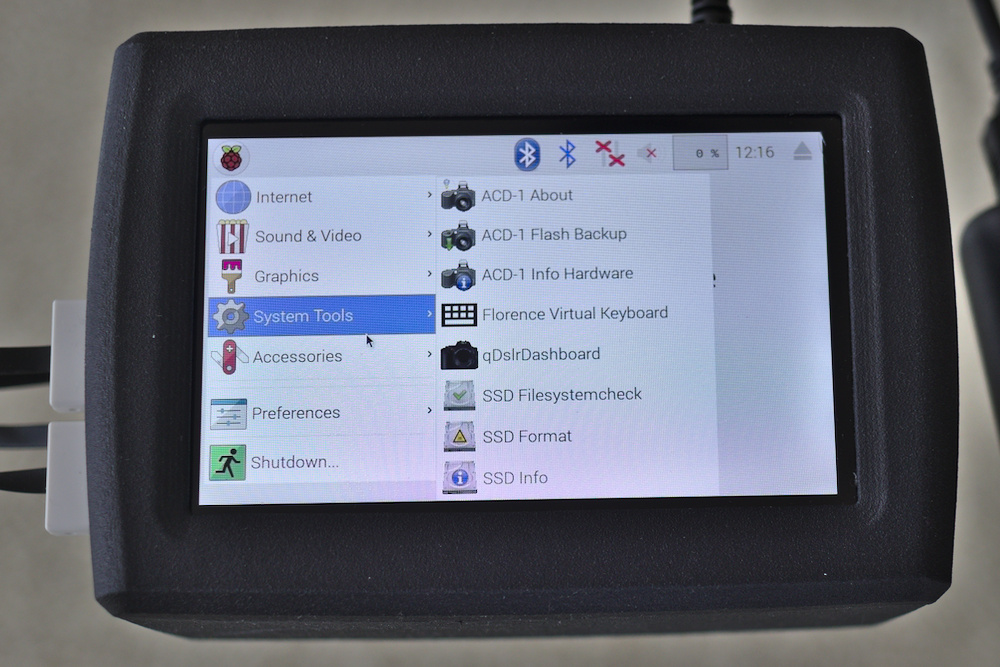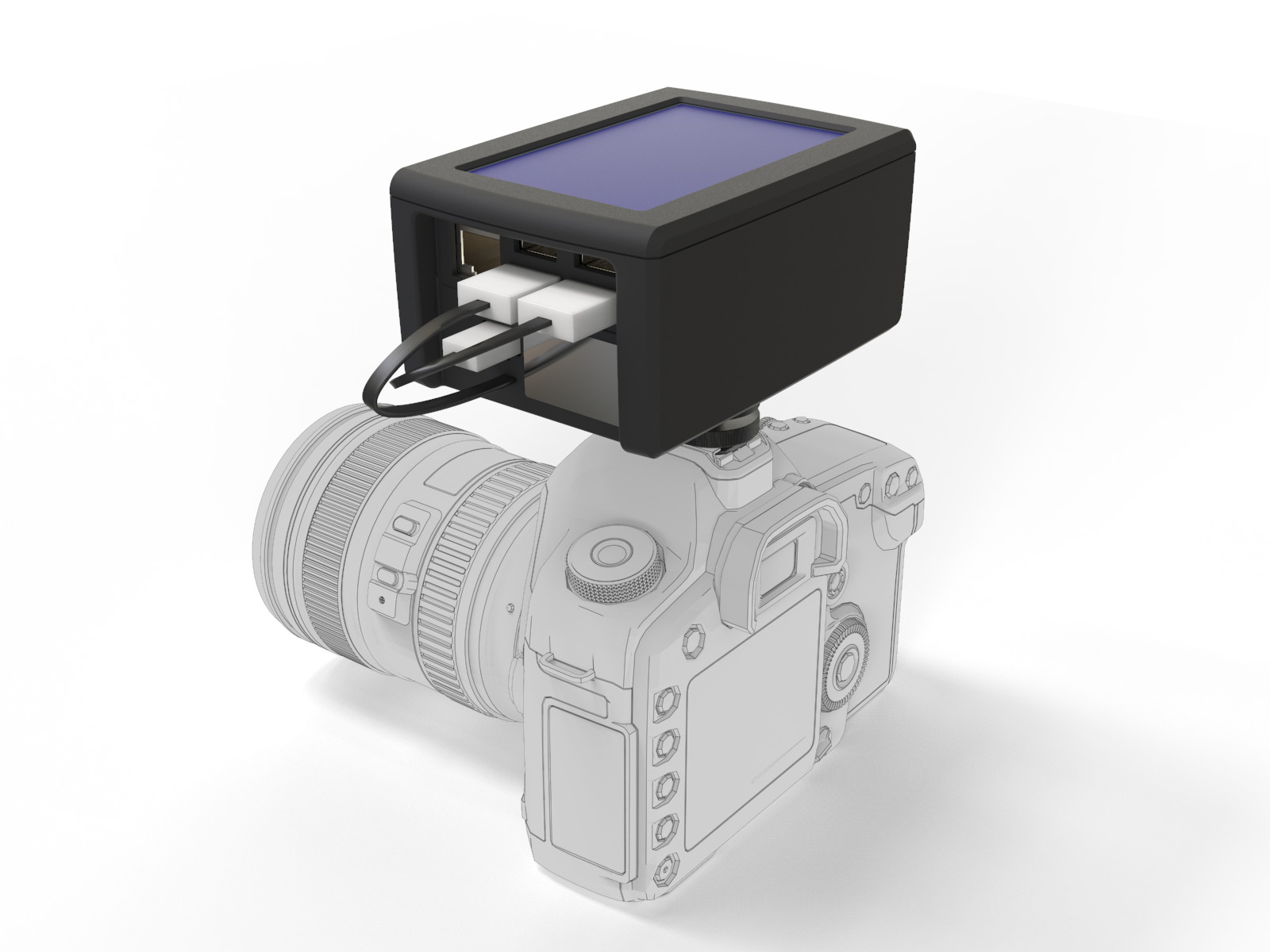Foto- und Videoblogs
The Advanced Camera Device (ACD) is a portable, up to 2TB media storage device for your photos and videos, and a camera control device for e.g. Time lapse photography, focusstacking in one. You can also use the device to view the photos / video on the display, connected monitor / TV. Equipped with a 4 inch touch display, it offers easy operation, LiveView and secure data storage in a high quality case. The device is modular. If required, the M.2 SATA SSD module can later be replaced by a higher capacity version. The power is supplied by a power bank or a powerful mobile phone charger.
The unique device is a DIY project and is based almost entirely on open source software. You can download the completely configured software distribution in the download area for free.
Advantages
- High-quality 4-inch IPS capacitive touch display for the controller and the LiveView
- Use of M.2 SATA SSD modules for backup of your photos / videos
- Integrated card reader for SD cards
- Camera control via the popular software qDslrDashboard with many useful functions
- Integrated WLAN for wireless connection to your camera
- HDMI connection for e.g. Video playback on the TV
- Can be connected as an external SSD to the PC
- Integrated FTP server for uploading and downloading data over the network
- The open source software can be extended and improved by the community
- Compact, mobile device with only 350g weight
Technical specifications |
Support |
Download |
Links |
FAQ |

Size comparison with a standard zoom
Detailed functions
Take a closer look at the Advancd Camera Device
|
4 inch touch screen with wide viewing angle The high-contrast IPS display offers a wide viewing angle of 160 ° and can also be read well outdoors. The Capacitive Touch Display is easy to operate with your fingers. The 4 "display offers a resolution of 18 bit color depth from the display is 800x480 pixels (~ 235 PPI) with a contrast of 500: 1. |
Large, vibration-resistant data storage For saving the photos and video an M.2 SATA SSD module is used. Memory modules ranging in size from 16GB to 2TB are available on the market. The variants with 256GB or 512GB currently offers the best price / performance ratio. You are welcome to favorable variant, e.g. of Intenso because the speed is limited by the USB port and not by the SSD speed. The SSD is connected via a USB-A port and can also be connected via a USB extension without drivers directly to a Windows, MacOS or Linux PC. The file system used is the flash memory optimized exfat. |
|
Backup software With the backup software, you can backup your data via the integrated card reader or the USB-connected camera. The backup will detect and skip existing data on the SSD (incremental backup). For the file name, there are various presets that you can select to save more from 9999 photos. |
Camera control with qDslrDashboard With the popular qDslrDashboard you can extend the functionality of your camera. The software allows you to perform long exposures of any length, time shifted shots, interval exposures, focus shooting, user-defined continuous shooting, auto-shift time-lapse photography for day / night transitions, and more. The camera can be controlled via a USB cable or a W-LAN connection. |
|
Integrated SD card reader The integrated card reader can read SD, SDHC and SDXC cards up to 2TB in size. The card reader is connected via a USB-A port and can also be used via a USB extender as a card reader on a PC. |
Raspberry Pi The used Raspberry Pi 3B or 3B + has W-LAN, BlueTooth, 4x USB-A ports (two for SSD and card reader) and a network connection. Via the W-LAN you can connect the device to your camera, if it also has an integrated W-LAN. Cameras without W-LAN connect simply over the USB cable of the camera. |
|
Power supply The Advanced Camera Device has no built-in battery. Power is supplied on the back via the micro USB socket. To power, you can use a power bank or a powerful charger for your mobile phone. Of course the Raspberry Pi power supply works as well. I recommend the Powerbank Anker PowerCore 13000 and the Anker PowerPort + 1 quick charger with Quick Charge 3.0. With the 13000mAh battery, the Advanced Camera Device will last more than 4 hours. More details follow for further tests. |
Supported cameras The supported cameras depend on the software I have no control over. Many Canon and Nikon DSLR's work and probably some Sony cameras. For more information see: I have successfully tested Canon EOS 80D and Canon EOS 5D Mark IV and work very well. Further information will follow. For more information see Support |
|
HDMI auto switch ACD-OS checks at boot time whether a monitor or TV is connected to the HDMI port. If a device is found at the HDMI port, the configuration is changed and the image output is output from the connected device. The touch display is then unusable. Without a device on the HDMI connection, the touch display is always used. |
Extension / expansion By adding software, you can extend the functionality of the ACD. For example, To make the device DLNA / UPNP capable, you can install ReadyMedia (formerly minidlna). You can then easily save the JPEG photos and MPEG video from the SSD, e.g. play on your TV. The Raspberry PI can only play MP4 / H264 video with hardware shudder. To play MPEG-2 and VC-1 video with hardware acceleration, a license must be purchased. Raspberry Pi MPEG-2 / VC-1 license I also imagine using the ACD to record sound for your videos. Simply connect a wireless microphone to the ACD and record via an audio recorder software (idea is untested). Be creative and take advantage of the potential of the Raspberry Pi ... |





